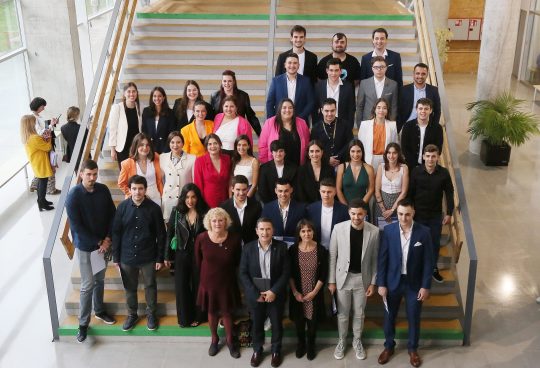Our work on a proton-responsive hydrogen generation catalyst reached the cover in Organometallics!
Two water-soluble ruthenium(II) complexes (1 and 2) containing the proton-responsive 6,6′-dihydroxy-2,2′-bipyridine (dhbp) ligand were studied as precatalysts for the solvolysis of ammonia-borane (AB) in water and/or alcohols. Both precursors generate in situ the same catalytic system. In spite of the excellent initial activities observed, it suffered a sudden deactivation at extended conversions. Detailed experimental studies combined with theoretical (density functional theory) calculations permitted us to describe the reaction mechanism as two interrelated pH-dependent catalytic cycles operating within a single run. According to this hypothesis, the deactivation observed occurred as a consequence of the increase in NH3 concentration and pH along the reaction progress. It was attributed to deprotonation of the dhbp ligand and amination or hydroxylation of the resulting compound. Accordingly, reactions performed in buffered solutions at neutral pH retarded this process, and up to 2.5 equiv of H2 per mole of AB were liberated in less than 1 min (TOF50% up to 33 113 h–1 (TOF = turnover frequency)). When the reaction was run in alcohols (MeOH, EtOH, or iPrOH) it proceeded at faster rates than in water, the one discussed here being the first homogeneous catalytic system active for this process. Actually, in MeOH, the initial TOFs surpasses that of any metallic or organometallic catalyst reported for AB alcoholysis.
To access full paper click here.








